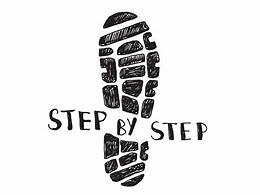Personal growth is an intriguing journey that everyone embarks on throughout their lifetime. Each new adventure bestows us with invaluable wisdom that flourishes our personality and worldview. However, the most enriching experiences guiding the voyage of self-discovery often stem from travel. The adventures traveling to different places, immersing ourselves in diverse cultures, tasting exotic cuisines, and experiencing the world’s beauty are transformative experiences that contribute uniquely to personal growth.
Painting Over the Canvas of Life
Stepping into unknown territories lets us stand on the precipice of fear, excitement, curiosity, and courage simultaneously. Whether it is combating acrophobia on a sky-diving quest, liquidating savings for a dream destination, or diving into solitude on a soul-searching journey – confronting personal challenges on travels broadens our perspective, instills resilience, and cultivates a growth mindset.
On a trip to South Africa, as I stood on the edge of the rugged cliffs of Cape Point, I was overwhelmed with fear and awe. The mighty oceans roared beneath, and the wind howled in my ears. Conquering the dizzying heights and my crippling fear, I felt a transformation within myself that was less about defeating my fear and more about accepting my vulnerability and still moving forward.
Learning the Language of Empathy
Travel not only offers stunning Instagram-worthy pictures but also grants experiences that help understand and appreciate societal differences and similarities. A visit to Tokyo revealed more than technological wonders; it unveiled the essence of discipline and respect in everyday life. The intricate rituals involved in a tea ceremony or the dedicated precision of sushi making highlighted the value of patience and precision, teaching a lifelong lesson in mindfulness.
On a trip to Greece, it was enriching to experience its vibrant culture, rich history, and relentless spirit of its people. The locals’ determination to sustain their colossal historical heritage and the populace’s indomitable spirit, despite economic difficulties, educated me about historical pride and national resilience.
Embracing Change, Cherishing Growth
By breaking away from our comfort zones and being open to change, we nurture a journey of self-evolution. Traveling helps us learn, not by addition, but by subtraction. As we let go of preconceived notions, biases, or prejudices, we unlearn and learn anew. I realized this during my stay in the serene, maroon-painted lanes of Bhaktapur, Nepal. I learned to appreciate simplicity by witnessing their contentment with basic amenities, contrasting starkly with my hitherto urban lifestyle, reminding me of the essence of gratitude and the joy of simplicity.
Every journey is far more than the places visited. It is about the road taken, the stories heard, the knowledge gained, and the wisdom shared. While the route may conclude, the journey of personal growth continues. In the grand tapestry of life, each new travel thread adds color, texture, and vibrancy, making the overall picture more beautiful and profound. The transformation we experience through our travels is an eternal keepsake, providing lifelong inspiration for growth and change. As the great Ibn Battuta said, “Traveling – it leaves you speechless, then turns you into a storyteller.”










